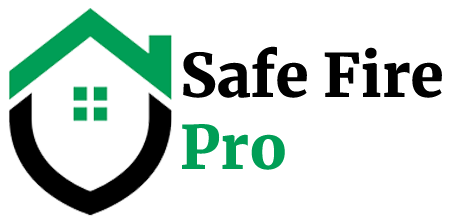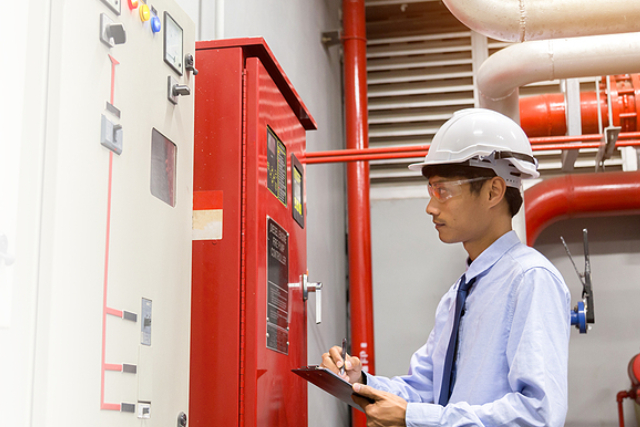Fire supervisory systems consist of various zones. Within each of these, one or more initiating device circuits connect directly with your fire alarm panel via visible indicators such as LED lights or LCD displays, providing visual communication with its fire alarm panel.
These signals typically represent non-emergency conditions requiring maintenance or any problems with fire safety equipment such as sprinklers and fire pumps that interfere with their proper function. Your trusted fire protection service provider can help you identify these signals.
Addressable Supervisory Devices
Devices used to communicate with fire alarm systems via low-voltage electrical current. They send bits of data such as their address ID and status (normal, supervisory). This enables monitoring and display on fire panels as well as sending signals to control panels to activate alarms and notifications or for remote monitoring purposes.
Conventional supervisory devices use switch contacts to short both sides of a device circuit together, causing an increase in current that the FACU interprets as a signal. Addressable devices on such circuits (called zones in most systems) transmit their identification via bits of data sent over dedicated signaling lines circuits; then polled for status by polling panel for their status and by address ID to locate devices experiencing problems.
Supervisory or trouble signals signal a malfunction in the fire system, which could be caused by activated duct detectors, tampered sprinkler valves, or any other issue. As with fire alarm signals, personnel on site need to be informed as soon as there’s something amiss so they can take immediate steps to rectify it before becoming more serious.
Some fire alarm systems utilize cellular communicators to notify off-site personnel and the local fire department of an emergency or suspicious activity, helping reduce response time while also ensuring everyone involved in an incident receives timely notice of it – potentially saving lives and property in the process.
Conventional Supervisory Devices
Supervision refers to your fire alarm system’s ability to accurately and promptly recognize issues and respond accordingly, typically by means of monitoring devices that send signals directly to a Fire Alarm Control Panel (FACP) or off-premises supervisory station for action to be taken.
Conventional supervisory devices use switch contacts to short both sides of a device circuit together, which the FACU interprets as a supervisory signal. This type of device can often be found in older conventional panels and may prove more reliable when it comes to sending supervisory signals than addressable systems.
Both conventional and addressable fire alarm panels can be programmed to recognize when devices have reached a supervisory state, enabling you to set an evacuation process or timer when this happens.
Supervisory conditions indicate something requires further investigation but don’t rise to alarm level, such as an activated duct detector, low water pressure in a sprinkler system, or that a release valve has closed.
When a supervisory condition is detected, it can be sent directly to an AHJ (Authority Having Jurisdiction). They may dispatch the fire department, or choose a different approach such as waiting up to 90 seconds before making their determination regarding whether or not an alarm should be activated based on NFPA 72 codes.
Supervisory Points
Supervision in fire safety can be a complex concept. According to NFPA 72 and the International Building Code, supervision refers to two separate aspects–supervisory signals and services. Furthermore, local and off-premise supervision services exist as options.
Supervisory signals alert your fire alarm control panel (FACP) of issues within your system that do not constitute alarms; these issues must still be dealt with immediately in order to prevent further complications or an actual fire emergency from arising. A trouble signal, on the other hand, alerts authorities of something which requires evacuation or an urgent callout of local emergency responders.
Supervisory signals include smoke detector malfunctions, battery issues and failure of fire suppression hose valves. Your fire system usually displays these conditions on its digital display screen to help on-site personnel identify and address them quickly and easily.
Off-premises supervision refers to any station or third-party monitoring company that monitors your fire alarm system remotely and alerts the fire department in case of an emergency. A remote supervision station can keep your facility safer while meeting NFPA 72 requirements for fire alarm systems that are monitored from one central location, and provide supervisory and trouble signals when necessary. A common misconception regarding off-premises supervision is that you need at least two communication paths – however NFPA 72 allows other technologies that use only single transmission methods like cell, radio or internet as long as they meet certain conditions.
Supervisory Indicators
Fire alarm supervisory indicators alert users of conditions requiring monitoring or maintenance in an effort to ensure the fire safety systems are prepared in case of emergency situations. For instance, these indicators might signal low water pressure in sprinkler systems, or that a door or damper has closed; such indicators typically appear with LED indicators on panels and remote annunciators and display text about this condition.
Trouble” signals on fire panels typically indicate there is an issue with one of the systems monitored and connected with a fire alarm system, such as duct detectors, fire alarm panel wiring, valves and room temperature valves, kitchen hood suppression, or fire pumps. If left unaddressed these issues can seriously interfere with its functionality and even cause further damage.
When encountering trouble or supervisory signals on your fire panel, don’t panic – the issue likely won’t be life-threatening, so take immediate steps to address the situation quickly in order to keep it from getting worse. Call your fire protection service provider ASAP in order to arrange an inspection and maintenance visit at least quarterly so your panel is working as expected.

